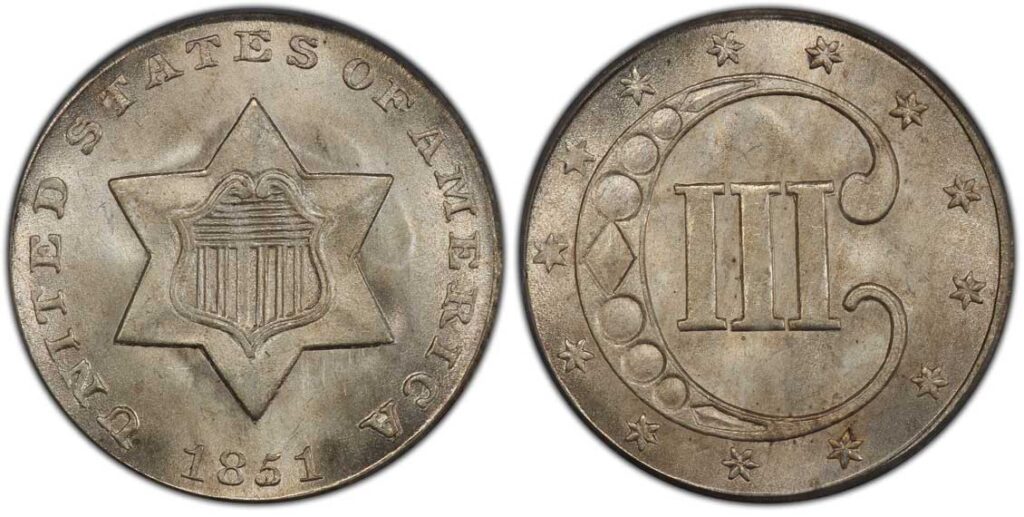
The 3 cent silver coin, also known as the trime or the fish scale, is one of the most unusual and fascinating coins in the history of the United States. It was minted from 1851 to 1873, and it was the smallest and lightest silver coin ever produced by the U.S. Mint. But why was it created, and what makes it so special? Let’s find out!
The Origins of the 3 Cent Silver Coin
The 3 cent silver coin was born out of a combination of factors that affected the U.S. economy and society in the mid-19th century. One of them was the California Gold Rush, which flooded the market with gold and increased its value relative to silver. This made silver coins more attractive for export and melting, creating a shortage of small change in circulation. Another factor was the reduction of postage rates from 5 cents to 3 cents in 1851, which created a demand for a convenient coin to pay for mail. Congress responded by authorizing a new coin of 3 cents denomination, made of 75% silver and 25% copper, with a weight of 0.8 grams and a diameter of 14 millimeters. The coin was designed by James B. Longacre, the chief engraver of the U.S. Mint, and featured a shield on the obverse and a Roman numeral III on the reverse.
The Evolution of the 3 Cent Silver Coin
The 3 cent silver coin was initially well received by the public, as it filled a gap in the coinage system and circulated widely. However, it also faced some challenges and criticisms. Some people complained that the coin was too small and thin, and that it could be easily lost or damaged. Others pointed out that the coin’s silver content was significantly lower than its face value, making it the first U.S. coin to be non-legal tender for unlimited amounts. In 1853, Congress passed an act that reduced the weight and size of all silver coins, except for the silver dollar, to discourage their export and melting. The 3 cent silver coin was also affected by this act, and its composition was changed to 90% silver and 10% copper, with a weight of 0.75 grams and a thickness of 0.8 millimeters. The design was also slightly modified, with the addition of two outlines around the star on the obverse and the Roman numeral on the reverse.
The 3 cent silver coin continued to circulate until the outbreak of the Civil War, which caused a massive hoarding of gold and silver coins. To alleviate the coin shortage, the U.S. government issued paper currency and fractional currency notes, which were widely used as substitutes for coins. In 1865, a new 3 cent coin was introduced, made of copper-nickel and featuring a portrait of Liberty on the obverse and a wreath on the reverse. This coin, known as the 3 cent nickel, was more durable and popular than the 3 cent silver, and gradually replaced it in circulation. The 3 cent silver coin was minted in very low quantities for its last decade, until it was abolished by the Coinage Act of 1873, along with several other denominations.
The Legacy of the 3 Cent Silver Coin
The 3 cent silver coin is a remarkable piece of history, as it reflects the economic and social changes that occurred in the U.S. during the mid-19th century. It is also a rare and valuable coin, as it has a low mintage and a high survival rate. The coin’s value depends on several factors, such as the year, the mint mark, the condition, and the demand. The most common dates are 1851, 1852, and 1853, which can be easily be found in good condition. The scarcest date is 1873, which was only minted as a proof coin. The only branch mint that produced the 3 cent silver coin was New Orleans, which struck 720,000 pieces in 1851 and added an O mint mark to the right of the Roman numeral. This coin is highly sought after by collectors.
